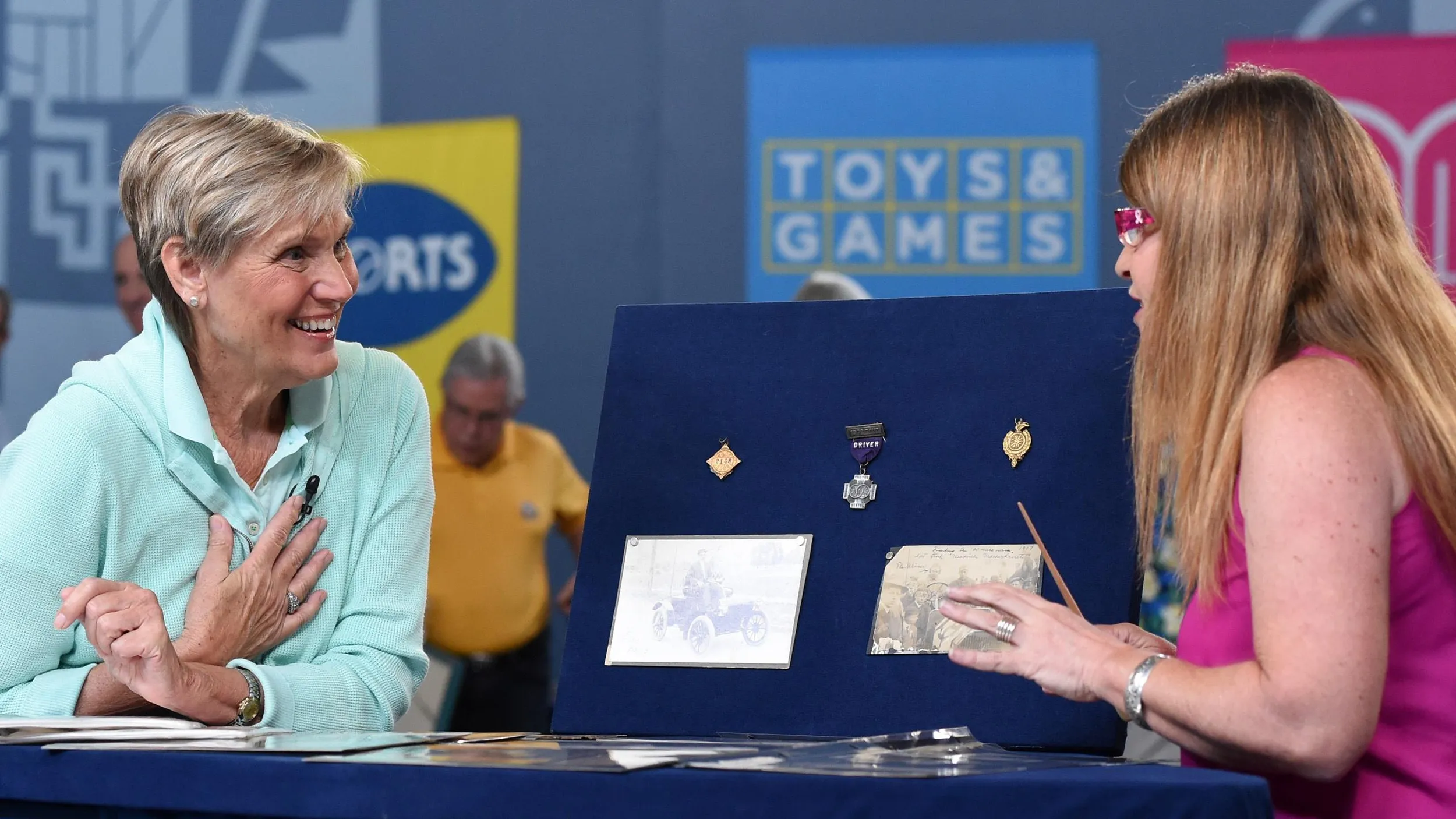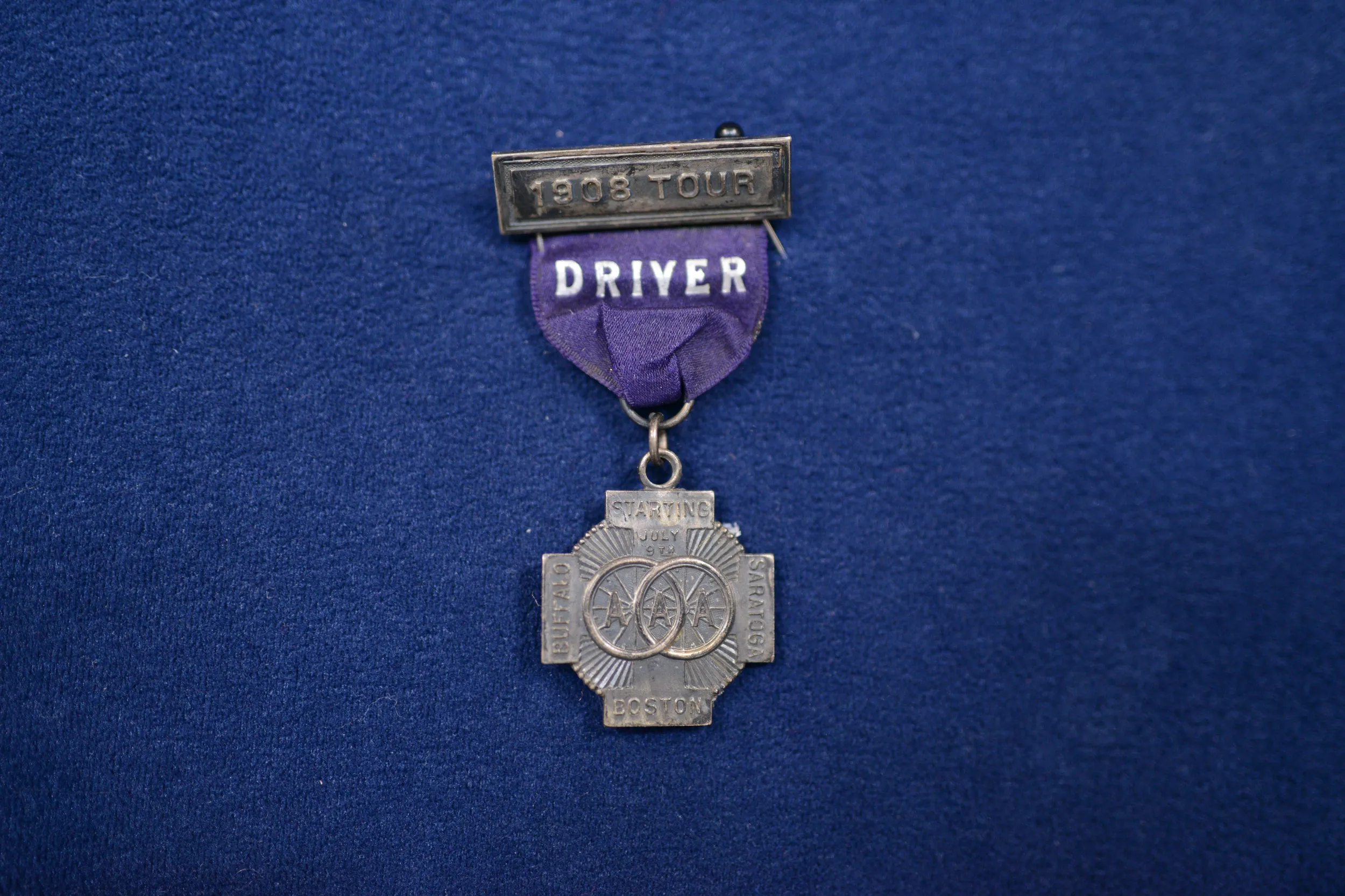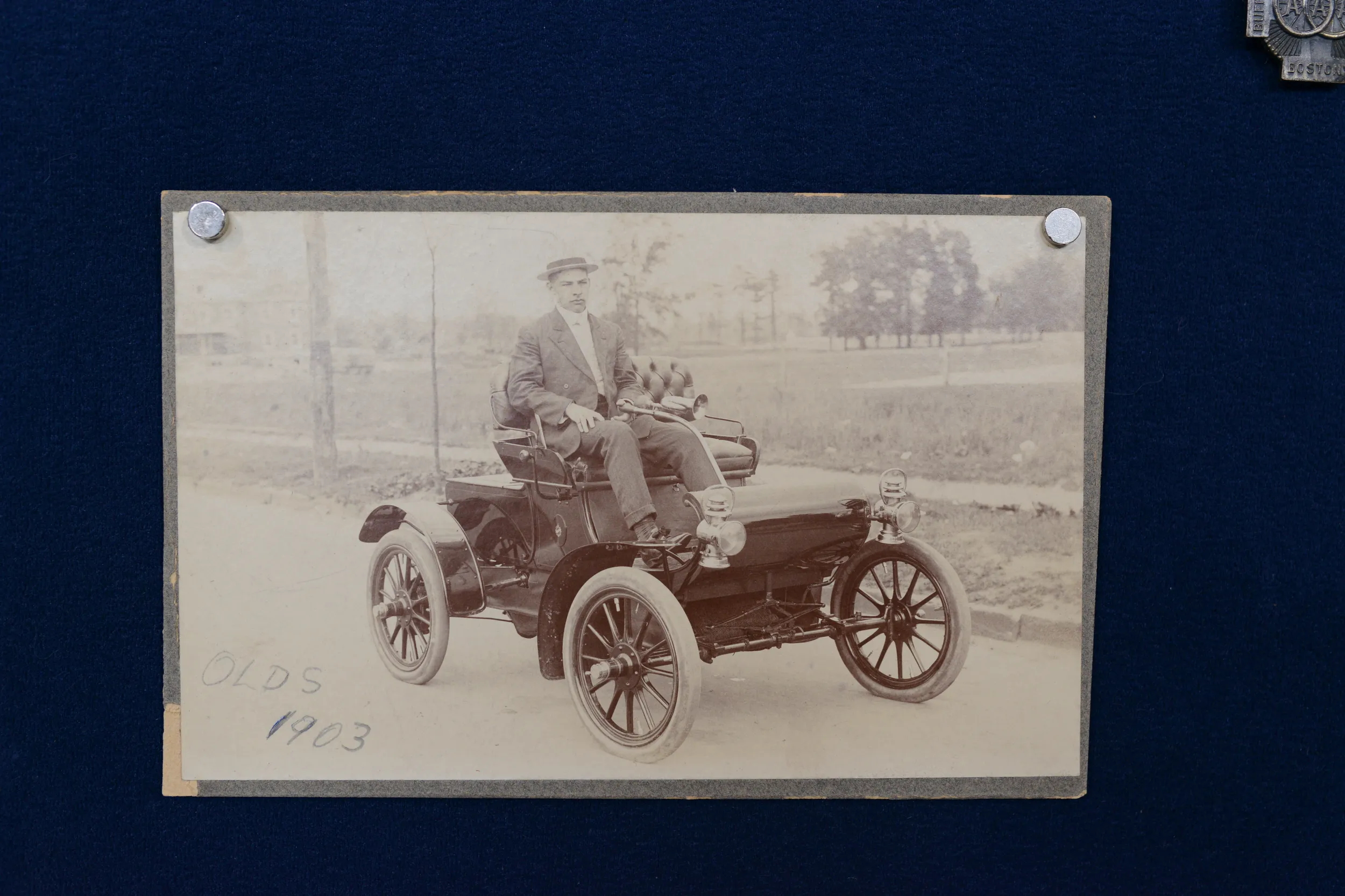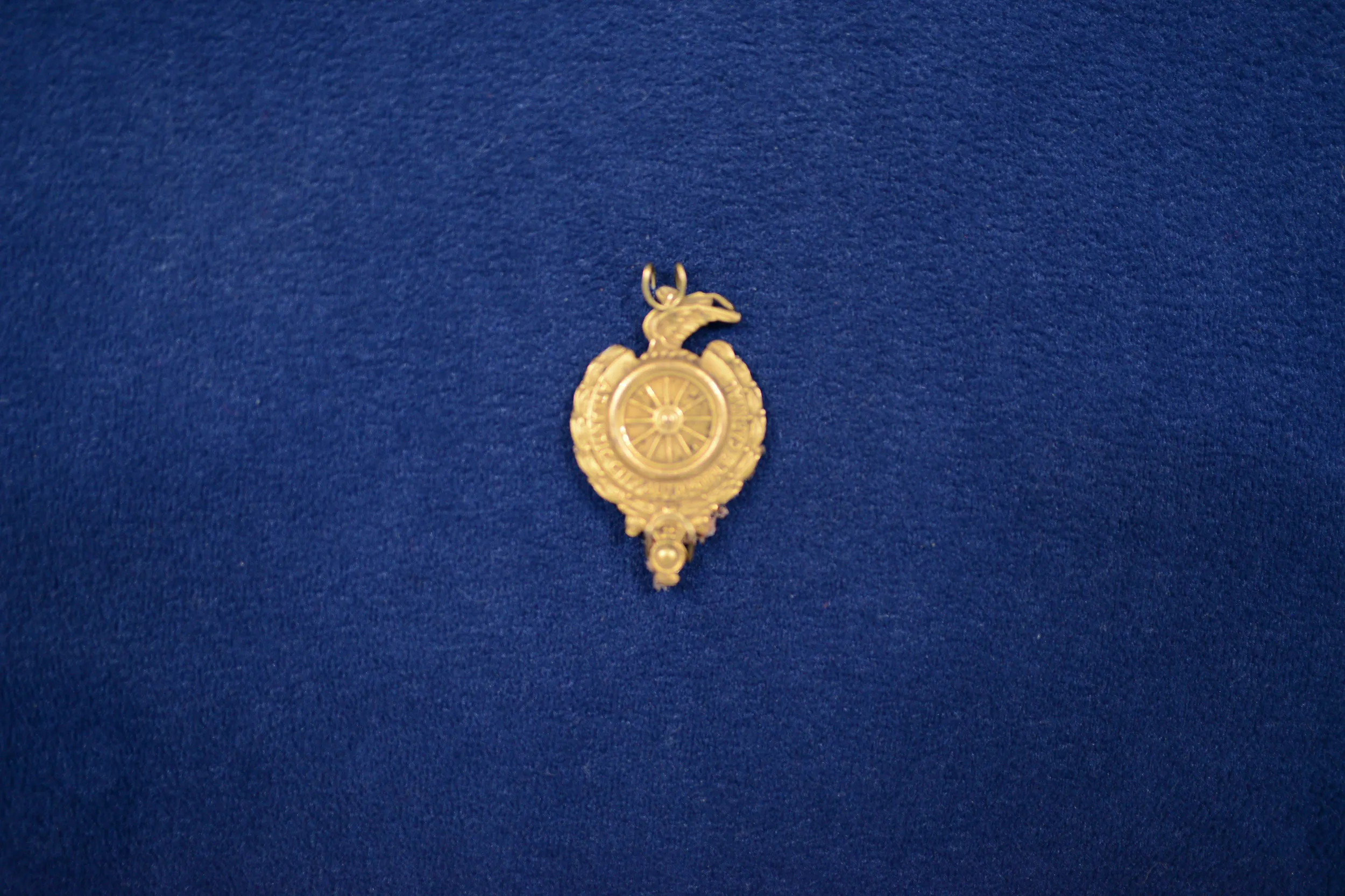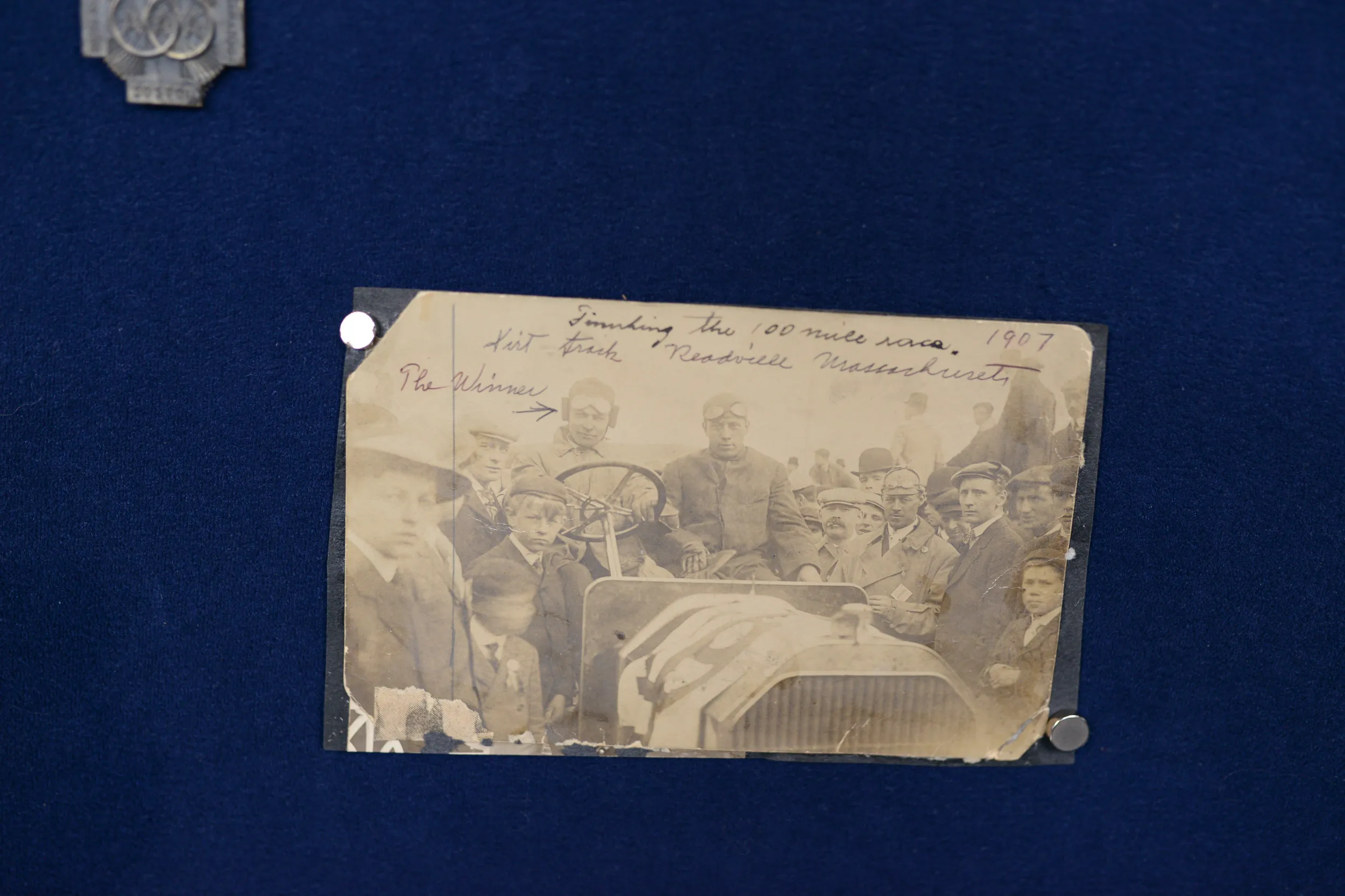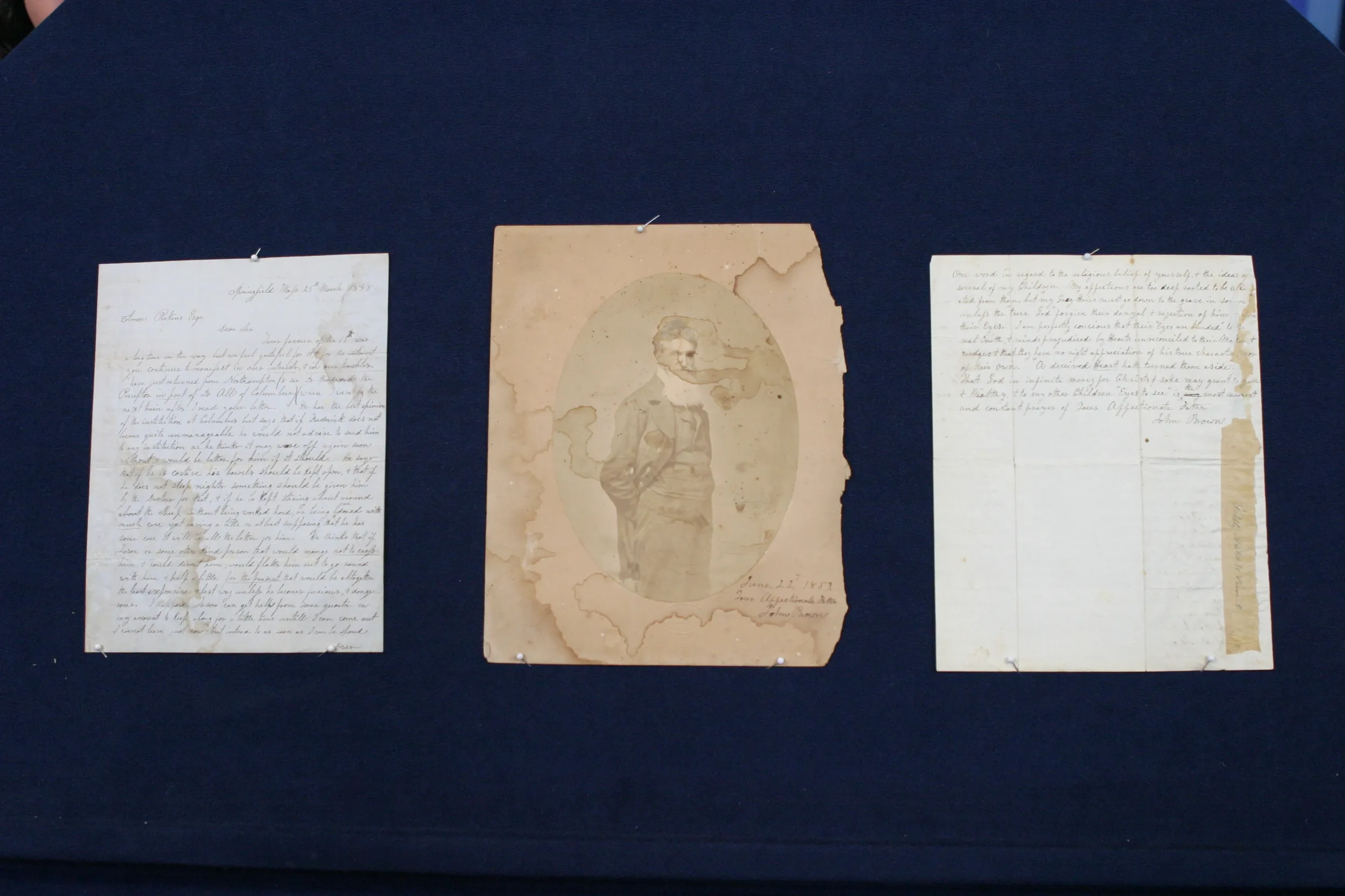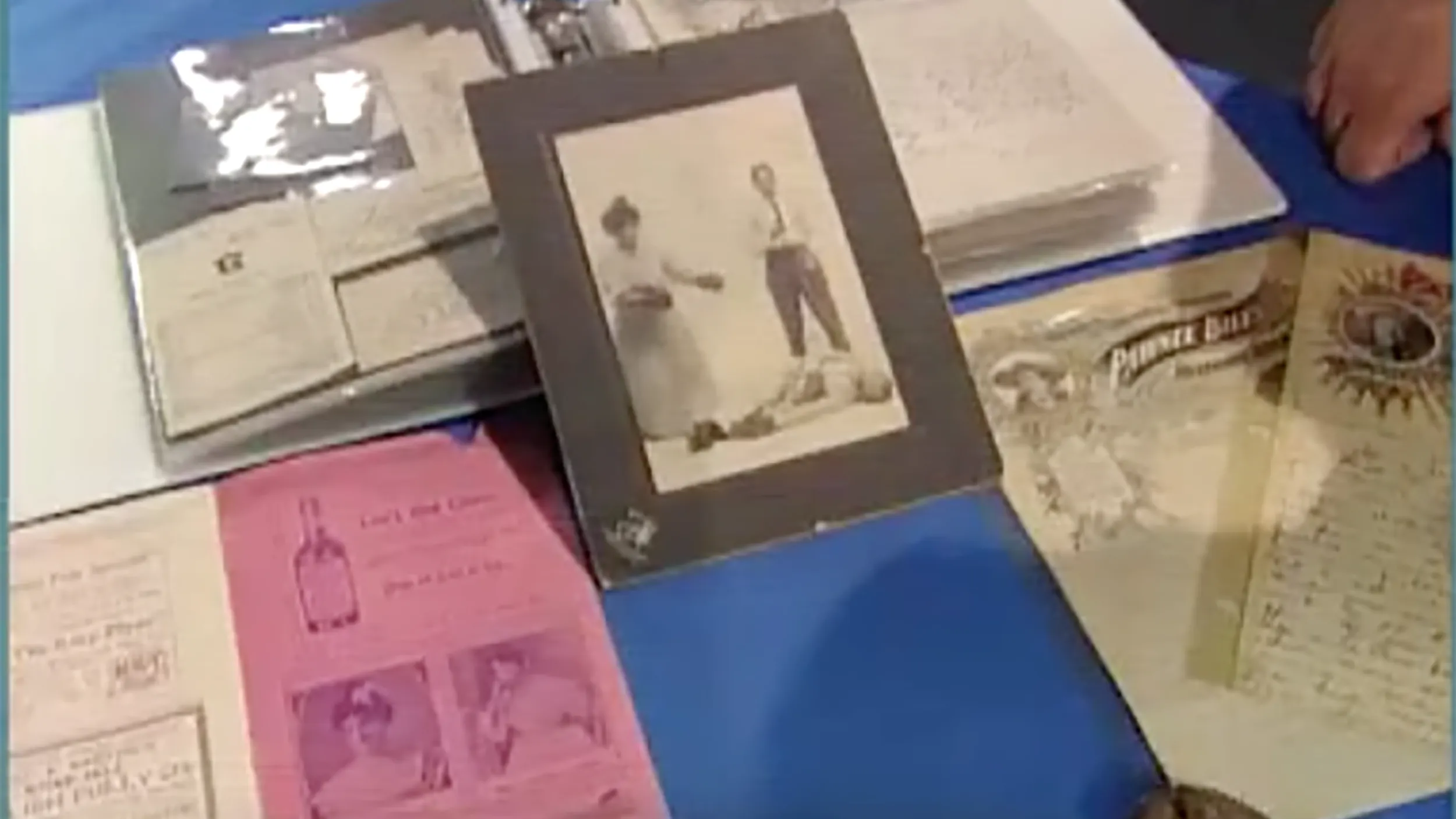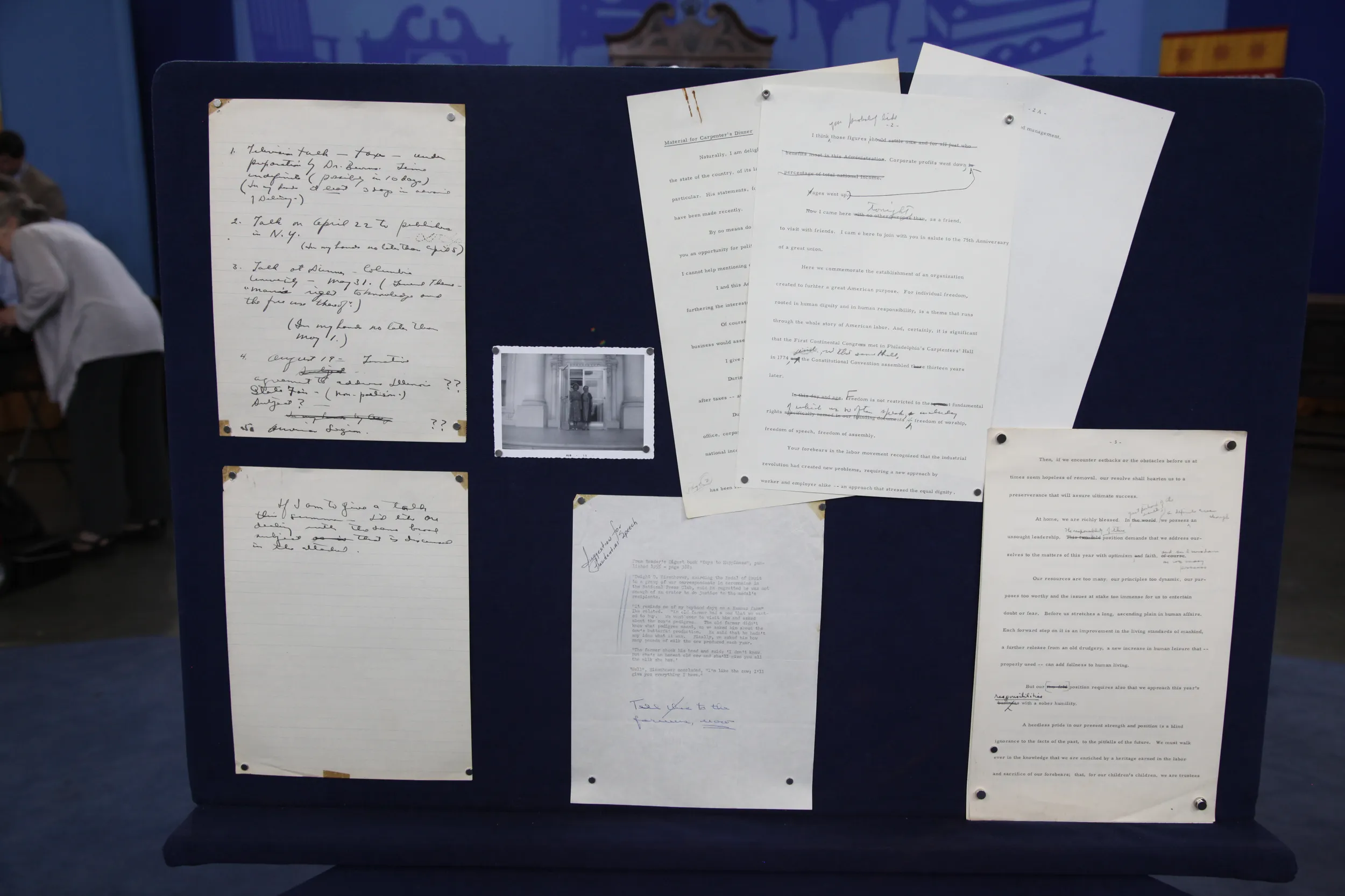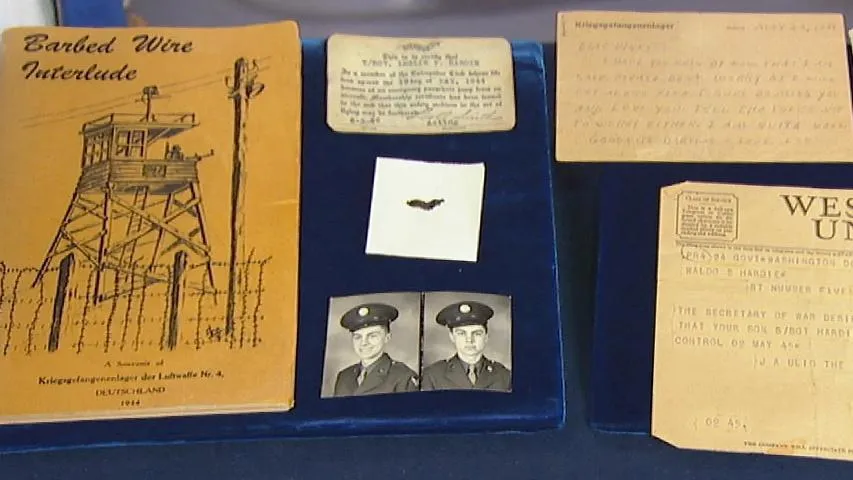GUEST: My grandfather came from Europe to the United States when he was 13, and he started working on bikes, which led him to automotives. He was an excellent mechanic, along with his brother, and they were hired by the Oldsmobile company to be their mechanics. What I have here is something that I just found-- and I want to find more out about this-- is these medals and these pictures from when my grandfather raced transcontinental automobiles.
APPRAISER: You knew your grandfather?
GUEST: I knew my grandfather until I was 20 years old.
APPRAISER: So what was he like?
GUEST: He was a man to himself. He was not very talkative, but when he did talk, we listened. I think he was a very bright man and totally absorbed in what he did.
APPRAISER: Any racing stories?
GUEST: Do you know, we never heard racing stories, and that's what is such the shock to me, is that we have all of this memorabilia. When my grandfather was done racing, he became an inventor, and he invented the pneumatic windshield wiper. So this racing career was his start in automotives.
APPRAISER: We're talking about the very roots of the automotive business in America. This is the curved dash Olds. This was not produced until 1901, and it's credited as the first mass-produced automobile. It beat Henry Ford! And in 1901, only 425 were produced. By 1903, there were 2,500 or 3,000. And do you know what it cost at the time?
GUEST: I have no idea.
APPRAISER: About $650.
GUEST: Which translates...? (laughs)
APPRAISER: Well, when you think about in 1901 that the average per capita household salary per year was $750, this was very expensive.
GUEST: Wow.
APPRAISER: So your grandfather was on the ground floor of something extremely exciting, and one of the ways they tried to improve cars and promote the automotive business so they could sell more cars was obviously to improve roads, but they built racetracks or they converted horse tracks to auto racing tracks, and they wanted to be able to promote the industry as a whole.
GUEST: No idea.
APPRAISER: So what your grandfather did, he went out and raced.
GUEST: Yes.
APPRAISER: Look at this particular photo that you brought us. This says, "The 100-mile race, dirt track, Readville, Massachusetts, 1907." Well, we did a little digging and we found an article in the Brooklyn Eagle. Your grandfather won this race. The first person to set a track record was Barney Oldfield in 1905.
GUEST: Yeah.
APPRAISER: Your grandfather in the 100-mile race set a track record in 1907: two hours and ten minutes.
GUEST: Oh my goodness!
APPRAISER: This is from Madison Square Garden. The first auto show there was 1900. We have medals here from 1907 and 1908, where he attended. In 1908 and 1909, he was on a tour from Boston to New York that he participated in. This is the Atlantic City automotive carnival, which only started in the early 1900s, and he was there as well.
GUEST: Wow. What amazing history. I mean, I'm so proud!
APPRAISER: It's priceless to you…
GUEST: It’s priceless.
APPRAISER: …and it's museum-worthy because this grouping of medals is very hard to find, and we have the provenance. We look at the condition, which these have been sitting for a long time, so some of the medals need a little cleaning on the back, and we look at the rarity, they're very rare, and they're also desirable for automobilia collectors. A conservative auction estimate would be $6,000 to $8,000 for the entire group. Now, if you're going to insure it, I would insure it for probably about $15,000.
GUEST: Wow, that's wonderful. As you said, it's priceless to the family, and that's probably where it's going to stay.

